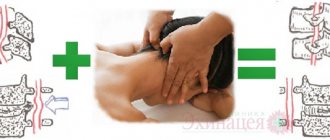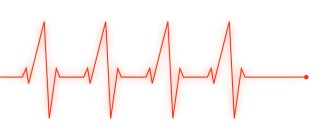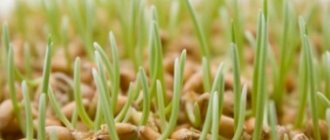Indications for use
Indications for prescribing the diet are diseases of the cardiovascular system, in particular atherosclerosis with damage to the vessels of the heart, brain or other organs, coronary heart disease caused by atherosclerosis and hypertension due to atherosclerosis. Heart disease requires a special attitude in everything - comprehensive attention to your health, quality treatment, lifestyle changes and proper nutrition. Treatment table number 10 is a nutrition system specially designed for heart patients, the purpose of which is to improve blood circulation, help the cardiovascular system, facilitate the functioning of the liver and kidneys, normalize metabolism and establish a gentle mode of operation for the digestive organs.
Diet "table No. 10"
The purpose of the diet is to improve blood flow through the vessels of all organs and systems, as well as normalize metabolism.
General characteristics of table No. 10
- Reducing calories by reducing fat and carbohydrate intake.
- Limiting the amount of salt
- Limiting the amount of liquids (tea, coffee)
- Limiting foods that excite the cardiovascular and nervous systems, as well as irritate organs such as the liver and kidneys (coffee, strong tea, chocolate, fatty, spicy, fried foods).
- Increasing the content of products (wheat bran, green peas, cucumbers, avocados, carrots, parsley, spinach, apples, watermelon, kiwi, melon, etc.) that contain potassium and magnesium to nourish the heart or prescribing certain medications by a doctor (cardiomagnyl, etc. )
- Culinary technology for preparing dishes with moderate mechanical gentleness. Meat and fish are boiled. The food temperature is normal.
- The diet is 5-6 times a day, meals are fractional.
Recommended table diet No. 10
Products indicated for consumption
Bread products: wheat bread, 1st or 2nd grade flour, yesterday’s baking or slightly dried, white bread croutons, dietary salt-free bread, toast, savory cookies and biscuits.
Cereals and pasta: various cereals in the form of porridges, casseroles, boiled pasta.
Milk and dairy products: milk, fermented milk drinks, cottage cheese and dishes made from it, low-fat unsalted cheese, milk soups.
Soups: vegetarian soups with various cereals, potatoes and vegetables, beetroot soups, you can add sour cream and herbs.
Meat and meat dishes: lean meat and poultry - beef, veal, trimmed pork, rabbit, chicken, turkey. Boiled or baked meat, without fat. Boiled sausages in limited quantities.
Fish and seafood: low-fat fish: flounder, hake, carp, pike perch, perch, eel, etc. – boiled or steamed.
Vegetables: potatoes, carrots, beets, zucchini, pumpkin, tomatoes, lettuce, cucumbers. Vegetables should be boiled or raw. Green onions, dill, parsley can be added to any dish.
Eggs and egg dishes: soft-boiled eggs or baked omelettes, egg white omelettes. No more than one egg per day.
Berries and fruits: soft ripe fruits and fresh berries, dried fruits, compotes, jelly, mousse, jellies, milk jelly and creams.
Sweets: honey, jam, candies without chocolate.
Drinks: weak tea, fruit (grape juice is limited) and vegetable juices, rosehip infusion.
Foods and dishes that need to be excluded
Bread products: fresh bread, butter and puff pastry products, pancakes, pancakes, muffins.
Cereals and pasta: limited semolina, legumes.
Milk and dairy products: salty and fatty cheeses, sour cream, cream.
Soups: soups made with strong meat, fish and mushroom broths.
Meat and meat dishes: fatty meats - duck, goose, pork, liver, kidneys, brains, sausages, any smoked meats, fried cutlets, chops, canned meat.
Fish and fish dishes: smoked and salted fish, canned fish, caviar.
Vegetables: legumes, salted, pickled and pickled vegetables, spinach, sorrel, radish, radish, garlic, onions, mushrooms.
Eggs and egg dishes: hard-boiled and fried eggs.
Snacks: canned food, pickles and marinades, sauces based on meat, fish, mushroom broth, mustard, horseradish, pepper.
Berries and fruits: fruits with coarse fiber: prunes, avocados, apple peels, raisins, quince and peach peels.
Sweets: chocolate, cakes.
Drinks: natural coffee and cocoa, energy drinks, strong tea, ginger, alcohol.
Example menu
The first day:
- First breakfast: freshly squeezed juice, a portion of oatmeal with water, 1 boiled egg, cabbage, cucumber and red pepper salad.
- Second breakfast: grated carrots with honey.
- Lunch: pasta made from durum wheat flour, beet salad with nuts.
- Afternoon snack: 35 g almonds, a glass of blueberries.
- Dinner: seafood soup, vegetable stew.
- Second dinner: 250 ml of kefir 0–1% fat.
Second day:
- First breakfast: weak green tea without sugar with lemon and honey, buckwheat porridge with bell pepper, dill and broccoli.
- Second breakfast: several fresh apples.
- Lunch: vegetarian borscht, a piece of black bread, dried fruit compote.
- Afternoon snack: 150 g of cottage cheese with the addition of dried apricots.
- Dinner: 120 g of steamed fish, a side dish of boiled vegetables with vegetable oil.
- Second dinner: yogurt with berries.
Day three:
- First breakfast: fresh juice, buckwheat porridge, vinaigrette, rose hip decoction.
- Second breakfast: salad of cabbage, apples, cucumbers and carrots, seasoned with vegetable oil.
- Lunch: a cup of vegetable soup, 130 g of fruit jelly.
- Afternoon snack: a bunch of grapes.
- Dinner: boiled fish with mashed potatoes and vegetable oil.
- Second dinner: yogurt.
Day four:
- First breakfast: fruit salad.
- Second breakfast: milkshake with banana.
- Lunch: beetroot soup, baked potatoes, tomato juice.
- Afternoon snack: baked apples, uzvar.
- Dinner: barley porridge with seaweed.
- Second dinner: yogurt.
Day five:
- First breakfast: oatmeal with berries, hawthorn tea.
- Second breakfast: salad of fresh tomatoes and cucumbers with herbs, dressed with vegetable oil.
- Lunch: potato and carrot puree soup with sour cream.
- Afternoon snack: sandwich with fresh tomato and canned salmon.
- Dinner: corn porridge with fish cutlet, stewed cabbage with prunes.
- Second dinner: yogurt.
Day six:
- First breakfast: two-white omelette with herbs, chicory with the addition of skim milk.
- Second breakfast: carrot and beet salad, cottage cheese casserole.
- Lunch: seafood soup.
- Afternoon snack: apple with cinnamon and cottage cheese, baked in the oven.
- Dinner: steamed fish cutlets, mashed potatoes.
- Second dinner: salad of grated carrots and apples.
Day seven:
- First breakfast: a couple of oatmeal pancakes with a spoon of honey, an orange.
- Second breakfast: tea with a handful of dates.
- Lunch: A bowl of soup with turkey meatballs.
- Afternoon snack: a few slices of melon.
- Dinner: salad of lettuce, tomatoes and boiled shrimp.
- Second dinner: weak green tea and some dried fruits.
Types of tables No. 10 in the diet
Table No. 10a
Indications:
- diseases of the cardiovascular system with circulatory failure, grade 1-2a.
- myocardial infarction
- cardiosclerosis
- heart defects
This diet is characterized by a protein content at the lower limit of the physiological norm, and fats and carbohydrates should be in moderation. The diet fully provides the body with vitamins C, P, PP, B. The amount of bread is reduced to 150 g per day (that’s 2 slices of bread), a serving of soup is up to 200 ml or is completely excluded, and cheese, millet, barley and pearl barley are also excluded.
Table No. 10b
Indications:
- rheumatism
This diet is high in protein and limited in easily digestible carbohydrates. Allowed and prohibited products completely coincide with the rules of the general table No. 10. In this case, vegetables are boiled or served raw, and dishes should be at normal temperature.
Table No. 10с
Indications:
- atherosclerosis of blood vessels of the heart, brain
- cardiac ischemia
- hypertension against the background of atherosclerosis.
This is a dietary diet with limited salt and fat in the diet. Animal fats are replaced with vegetable fats as much as possible. Be sure to include foods rich in ascorbic acid, B vitamins, potassium and magnesium salts into the diet. Plenty of seafood is also beneficial. Culinary processing of dishes, diet and restrictions are maintained in accordance with basic diet No. 10.
Table No. 10g
Indications:
- essential arterial hypertension
This is a salt-free diet. The diet provides for a high content of ascorbic acid, thiamine, riboflavin, vitamin P, magnesium and potassium salts. The diet includes foods rich in cell membranes, as well as seafood containing organic iodine, such as seaweed.
Top 15 healthy foods for blood vessels and heart
Leafy green vegetables
Cabbage, kohlrabi, broccoli, arugula, lettuce, spinach, dill, parsley and other greens are full of minerals, vitamins, and antioxidants. Vitamin K normalizes blood clotting, protects blood vessels and improves the functions of the cells lining them. Consumption of leafy greens significantly reduces the risk of ischemia, which was confirmed by a study involving 29,689 women. [12]
Avocado
One fruit contains 975 mg of potassium, which is 28% of its daily value. To reduce blood pressure by 8.0/4.1 mmHg. and a 15% risk of stroke, it is enough to consume 4.7 g of potassium per day. Monounsaturated fats in avocados reduce cholesterol in overweight people and the likelihood of developing metabolic syndrome. [3, 4]
Soybeans
Soy protein, unlike animal protein, reduces bad cholesterol by an average of 3% and has many cardiovascular benefits. Soy isoflavones play an important role in this - they reduce total cholesterol by 3.9 mg/dl and “bad” LDL by 5 mg/dl. [5]
Whole grain products
Compared to refined grains, brown rice, oats, rye, barley, buckwheat and quinoa contain more fiber. An analysis of 45 studies found that eating three servings of whole grains daily reduced the risk of heart disease by 22%. [6, 7]
Fatty fish
Salmon, mackerel, sardines and tuna provide your daily dose of omega-3 without additives. To lower systolic blood pressure, it is enough to consume three servings of fatty fish per week. [8]
Berries
Eating blueberries daily improves the function of the cells lining blood vessels and helps control blood pressure and blood clotting. Eating strawberries, blackberries and raspberries was also associated with an 11% reduction in excess weight, LDL cholesterol and inflammatory markers. Antioxidants anthocyanins provide benefits, which protect the body from oxidative stress. [9, 10]
Oranges
A medium orange contains about 62 calories and 3 grams of fiber. Pectin fights cholesterol, and potassium helps control blood pressure and improves the health of blood vessels.
Sweet potato
Replace white potatoes with sweet yams, which have a lower glycemic index. Sweet potatoes do not cause a rapid spike in blood sugar, and they also contain fiber, vitamin A and lycopene. To enhance the taste, you can season it with cinnamon and lime juice. [eleven]
Walnuts
It is an excellent source of fiber and microelements such as magnesium, copper, manganese. Studies have shown that regularly eating walnuts reduces LDL levels by 16%, oxidative stress and inflammation. [12]
Dark chocolate
High-quality dark chocolate with at least 70% cocoa content is rich in flavonoids. Studies have confirmed that if you eat it five times a week, the risk of developing ischemia is reduced by 57%. Eating chocolate twice a week was associated with a 32% lower risk of developing calcified plaque in the arteries. [13, 14]
Beans
Beans contain starch, which is not broken down by pancreatic enzymes - it is processed by bacteria in the large intestine. Resistant starch improves heart health by lowering triglyceride and LDL levels. Its action is complemented by folic acid, antioxidants, and magnesium. [15, 16]
Tomatoes
The vegetable contains the plant pigment lycopene with powerful antioxidant properties. It neutralizes harmful free radicals, preventing oxidative damage and inflammation - low levels of lycopene in the blood are associated with heart attacks and stroke. [17]
Seeds
Chia, flax, and hemp seeds are sources of heart-healthy nutrients, including fiber and omega-3 fatty acids. Adding them to the diet prevents heart disease, including inflammation, high cholesterol. [18]
Olive oil
Antioxidants and other substances in olive oil reduce inflammation and prevent heart problems. A study of 7,216 adults found that patients who consumed more of the healthy dressing had a 35% lower risk of developing heart disease. [19]
Garlic
The benefits of garlic are due to the presence of the compound allicin, which is known for various therapeutic effects. A six-month study shows that the effects of taking 600 to 1,500 mg of garlic extract daily are equivalent to taking a prescription blood pressure drug. [20, 21]
5 Steps to Protect Against Heart Disease
The ranking of the healthiest foods for the heart did not include foods that were less tested by scientists. But cardiologists and scientists have no doubt that you can also benefit from sweet red peppers, asparagus, acorn squash, cantaloupe, papaya, green tea, almonds, tofu, low-fat yogurt and carrots. This list of products is enough to create a delicious and healthy menu for the week - planning will help you follow the diet and track improvements.
When planning your menu, you should adhere to a few more rules:
- Control your portion size. How much you eat is just as important as what you eat.
- Eat more vegetables and fruits. Natural, whole foods are low in calories, high in fiber, and help reduce your intake of unhealthy snacks.
- Choose low-fat protein sources. Lean meats, poultry, fish, low-fat dairy products and eggs are some of the best sources of protein.
- Reduce the amount of salt in your food. Sodium increases blood pressure.
- Limit your intake of unhealthy fats. Avoiding trans fats is an important step to control your cholesterol levels.
Expert commentary
Tatyana Eliseeva, nutritionist, nutritionist
Changing eating habits can often be difficult, especially if you have years of unhealthy eating habits. As you step on the right path, remember that willpower is a muscle. The sooner you start training it, the higher your chances of a comfortable old age without serious heart disease.
Material publication date – October 12, 2021
Information sources
- Vitamin K: the effect on health beyond coagulation – an overview, https://www.ncbi.nlm.nih.gov/pmc/articles/PMC3321262/
- Fruit, vegetables, and olive oil and risk of coronary heart disease in Italian women: the EPICOR Study, https://pubmed.ncbi.nlm.nih.gov/21177799/
- The importance of potassium in managing hypertension, https://pubmed.ncbi.nlm.nih.gov/21403995/
- Effect of a moderate fat diet with and without avocados on lipoprotein particle number, size and subclasses in overweight and obese adults: a randomized, controlled trial, https://pubmed.ncbi.nlm.nih.gov/25567051/
- Soy isoflavones lower serum total and LDL cholesterol in humans: a meta-analysis of 11 randomized controlled trials, https://pubmed.ncbi.nlm.nih.gov/17413118/
- Effects of soluble dietary fiber on low-density lipoprotein cholesterol and coronary heart disease risk, https://pubmed.ncbi.nlm.nih.gov/18937894/
- Whole grain consumption and risk of cardiovascular disease, cancer, and all cause and cause specific mortality: systematic review and dose-response meta-analysis of prospective studies, https://www.ncbi.nlm.nih.gov/pmc/articles/ PMC4908315/
- Moderate consumption of fatty fish reduces diastolic blood pressure in overweight and obese European young adults during energy restriction, https://pubmed.ncbi.nlm.nih.gov/19487105/
- Effects of Berries Consumption on Cardiovascular Risk Factors: A Meta-analysis with Trial Sequential Analysis of Randomized Controlled Trials, https://www.ncbi.nlm.nih.gov/pmc/articles/PMC4804301/
- Strawberries decrease atherosclerotic markers in subjects with metabolic syndrome, https://pubmed.ncbi.nlm.nih.gov/20797478/
- Effect of consuming a purple-fleshed sweet potato beverage on health-related biomarkers and safety parameters in Caucasian subjects with elevated levels of blood pressure and liver function biomarkers: a 4-week, open-label, non-comparative trial, https:// www.ncbi.nlm.nih.gov/pmc/articles/PMC4965517/
- Effects of walnut consumption on blood lipids and other cardiovascular risk factors: a meta-analysis and systematic review1,2,3, https://www.ncbi.nlm.nih.gov/pmc/articles/PMC2696995/
- Chocolate consumption is inversely associated with prevalent coronary heart disease: the National Heart, Lung, and Blood Institute Family Heart Study, https://pubmed.ncbi.nlm.nih.gov/20858571/
- Chocolate consumption is inversely associated with calcified atherosclerotic plaque in the coronary arteries: the NHLBI Family Heart Study, https://pubmed.ncbi.nlm.nih.gov/20655129/
- Nutritional quality of legumes, and their role in cardiometabolic risk prevention: a review, https://pubmed.ncbi.nlm.nih.gov/23398387/
- Pinto bean consumption reduces biomarkers for heart disease risk, https://pubmed.ncbi.nlm.nih.gov/17634169/
- Lycopene and tomato and risk of cardiovascular diseases: A systematic review and meta-analysis of epidemiological evidence, https://pubmed.ncbi.nlm.nih.gov/28799780/
- Potent antihypertensive action of dietary flaxseed in hypertensive patients, https://pubmed.ncbi.nlm.nih.gov/24126178/
- Olive oil intake and risk of cardiovascular disease and mortality in the PREDIMED Study, https://pubmed.ncbi.nlm.nih.gov/24886626/
- Effect of garlic on serum lipids: an updated meta-analysis, https://pubmed.ncbi.nlm.nih.gov/23590705/
- Effects of Allium sativum (garlic) on systolic and diastolic blood pressure in patients with essential hypertension, https://pubmed.ncbi.nlm.nih.gov/24035939/
Attention! The information is for informational purposes only and is not intended to make a diagnosis or prescribe treatment. Always consult a specialized doctor!
Authors: Anna Shelestun, Tatyana Eliseeva Ask a question
Rating:
10
/10
Votes: 12
Usefulness of material 10
Reliability of information 10
Formatting of Article 10
When should you start a diet for cardiovascular diseases?
If you are concerned about any symptoms of the cardiovascular system, I recommend that you make an appointment with a cardiologist and undergo a full examination.
The doctor will ask you in detail about your complaints, what medications you are currently taking, so before seeing a cardiologist, it is better to prepare a blood pressure monitoring diary with measurements in the morning and evening, write down under what physical or emotional stress pain in the heart area appears, whether you feel it under the shoulder blade, in the left hand. If you have already taken medications, note their name and dosage so that the doctor can choose treatment for you.
If there is a lack of vitamins and minerals in your diet, your doctor will select them for you in the form of dosage forms and individually prescribe the dosage
Be healthy!!! And we will always help you find the “Path to Health”
The article was written by physician-therapist L.D. Khazieva.











